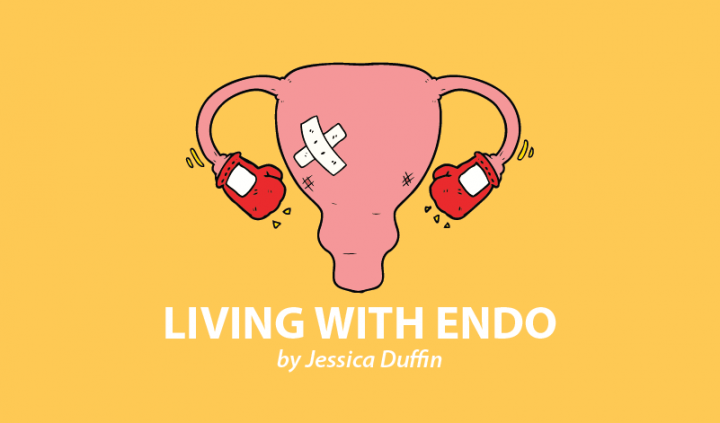When I was 17, I broke several bones, including my pubic rami, spine, hip, and pelvis. I was hospitalized and bedbound for several weeks, and had to have a catheter. That was the beginning of both my interstitial cystitis and endometriosis symptoms.
Catheters often cause infections, which can become chronic if not treated properly. Of course, it’s likely that the trauma of my injuries upregulated my nervous system and created nerve sensitivity in the area as well.
Over time, new problems layered themselves on top of the old ones. Chronic pain from endometriosis caused a tightening of my pelvic floor, surgeries caused adhesions, chronic inflammation caused more swelling and damage, and advancing gut health issues created an upregulated immune system.
The progression of my interstitial cystitis (IC) symptoms was gradual, but these symptoms came to a head in 2019, when I began experiencing daily pain. Since then, I have been on a path of healing.
It’s been a long road, with one step forward and two steps back at every turn. Yet in the past several months, I’ve begun noticing change. I know I won’t be fully healed for some time, but I wanted to share what has worked for me so far.
Low(ish) histamine
One of my first ports of call when starting to target my IC was trying a low-histamine and low-oxalate diet. Histamine and oxalate sensitivity are strongly associated with bladder pain, and due to my compromised gut health and endometriosis, it made sense as the next step.
Unfortunately, the intensity of the diet combined with personal circumstances just sent my stress levels through the roof, and my pain only escalated. Yet, I did notice improvements in my health in other ways.
While a 100% low-histamine diet didn’t seem to make a huge difference during that period, I’ve found that trying to add back into my diet high-histamine foods, such as fermented or cultured foods, puts me in too much pain.
Because my healing is an ongoing process and may take some time, instead of adopting a fully low-histamine diet, which is supposed to be therapeutic and temporary, I straddle the line somewhere in between. This way, my symptoms stay at a somewhat manageable level, and I still get a wide array of nutrients.
Small intestine bacterial overgrowth treatment
Last October, I began treating my small intestine bacterial overgrowth, or SIBO. SIBO is a condition that occurs when normal bacteria that should be in the large intestine get stuck and accumulate in the small intestine. This causes a host of issues, from irritable bowel syndrome to full body pain.
After my attempt at a low-histamine diet, I decided to go deeper and explore exactly why my gut wasn’t handling histamines. I had a hunch it was SIBO, and I was right. SIBO is strongly associated with interstitial cystitis, so I began treating my SIBO in order to also treat my IC.
While my SIBO treatment is a long process, I’ve noticed that my bladder pain has become less severe over time. It certainly peaks at points, like when I’m having to take certain SIBO medications, but as my gut heals, my bladder is healing, too.
Supplements
When I first began really trying to target my IC, I started with natural antihistamines, such as high-dose rutin and quercetin. Unfortunately, they didn’t seem to do much, but I believe my stress levels at the time overrode any of their potential benefits.
More recently, I invested in two supplements that research has shown to lower symptoms and pain in people with interstitial cystitis: Prelief and Desert Harvest Aloe Vera. Prelief is helpful when I want to eat a typical IC trigger food, such as lemon, because it reduces the acid in food, whereas the aloe vera capsules help to rebuild the bladder lining.
Despite Desert Harvest stating that the best results come from several weeks of use, I began feeling relief almost immediately. Of course, I doubt my bladder could begin repairing itself in such a short amount of time, but due to aloe vera having mucilaginous properties, it has the ability to line the gut and bladder with a soothing layer. This actually is problematic for SIBO patients like me, as mucilaginous herbs and plants like aloe, chamomile, and marshmallow root can actually trigger symptoms. But I seem to be doing OK regardless.
Physiotherapy
A big part of my bladder dysfunction can be attributed to having a tight pelvic floor after enduring years of endometriosis pain.
Physiotherapy allowed me to have some level of normal functioning back. Unfortunately, COVID-19 put a stop to my sessions, but I still work on what I can at home, with stretches and yoga for IC.
***
Note: Endometriosis News is strictly a news and information website about the disease. It does not provide medical advice, diagnosis, or treatment. This content is not intended to be a substitute for professional medical advice, diagnosis, or treatment. Always seek the advice of your physician or other qualified health provider with any questions you may have regarding a medical condition. Never disregard professional medical advice or delay in seeking it because of something you have read on this website. The opinions expressed in this column are not those of Endometriosis News or its parent company, BioNews, and are intended to spark discussion about issues pertaining to endometriosis.

